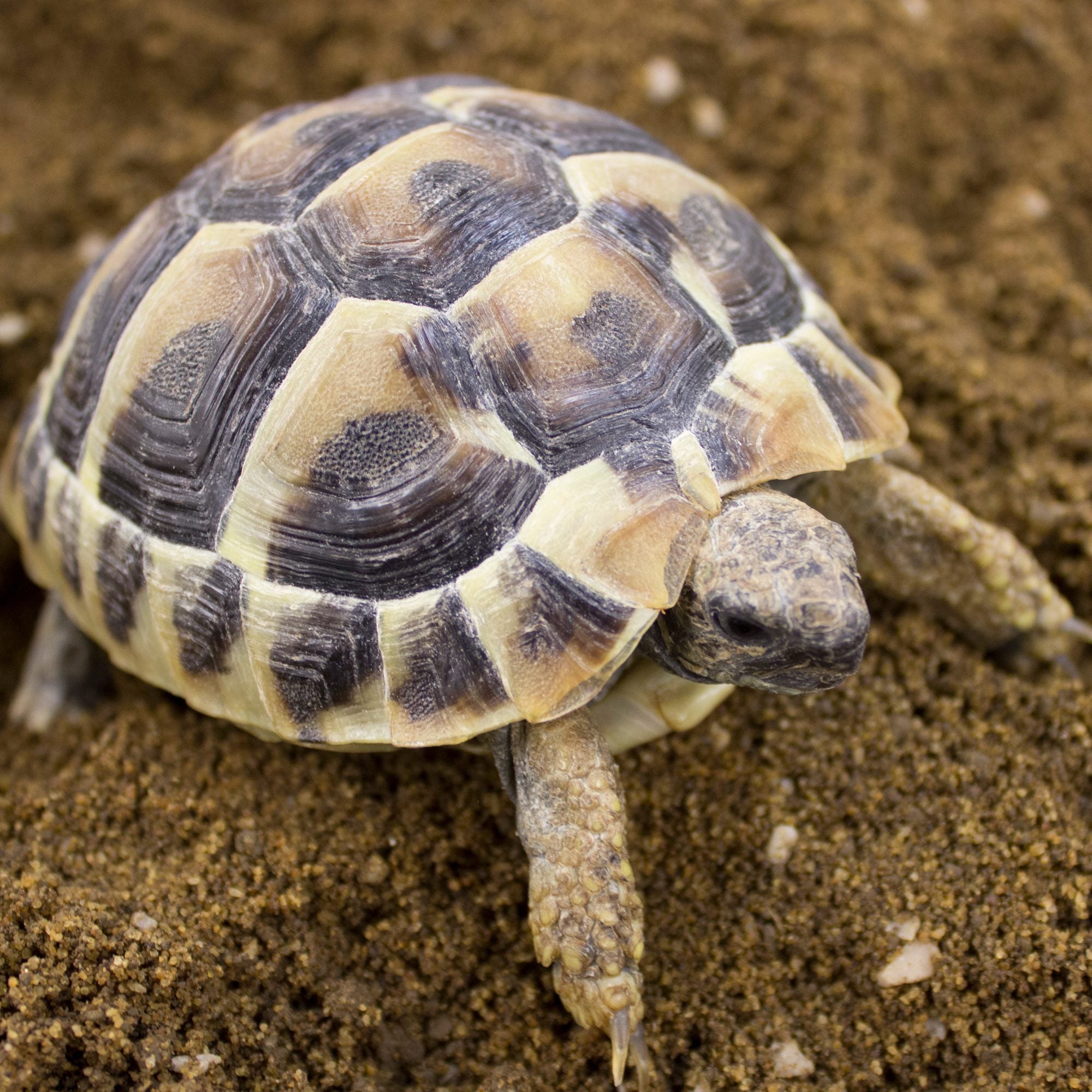Description
CB23 Hermanns Tortoise (microchipped)
Habitat and Housing
Hermann's Tortoises thrive in environments that mimic their native Mediterranean oak and beech forests, scrublands, and rocky hillsides. For captive tortoises, both indoor and outdoor enclosures can be suitable. Indoor enclosures should be spacious and avoid glass aquariums due to the "greenhouse" effect they create. A mix of clean topsoil, coconut coir, or peat moss, possibly with a layer of cypress mulch on top, provides a suitable substrate that maintains humidity around 70% and allows for burrowing, a natural behavior for these tortoises. Outdoor pens are beneficial during warmer periods, providing natural sunlight and grazing opportunities, but must be secure to prevent escapes.
Diet and Nutrition
A Hermann's Tortoise's diet should strictly be herbivorous, consisting mainly of dark, leafy greens like kale, dandelion greens, and collard greens, along with a variety of other vegetables. Fruits can be offered as treats but should constitute less than 10% of their diet. Supplementing with a high-quality, calcium-rich pelleted diet can also be beneficial, especially for young tortoises and egg-laying females. Ensure to dust food with a vitamin D3/calcium supplement to support shell and bone health. Avoid feeding them meat or trying to expedite their growth, as this can lead to health issues.
Health and Common Issues
Hermann's Tortoises are generally robust but can suffer from respiratory infections, metabolic bone disease due to improper nutrition or lack of UVB light exposure, and shell issues like pyramiding from incorrect humidity levels. Regular health checks, especially during the mating season for injuries, and ensuring a clean environment with proper humidity and temperature are key to preventing these issues.
Temperature and Lighting
Maintain an ambient temperature below 80°F with a basking area between 95-100°F to allow the tortoise to thermoregulate properly. Full-spectrum UVB lighting is crucial for vitamin D3 synthesis, necessary for calcium metabolism. A 12-hour light/dark cycle is recommended to mimic natural conditions and support healthy activity and metabolic rates.
Social Behaviour and Handling
Hermann's Tortoises have a gentle and passive temperament, making them suitable pets for those who can provide an outdoor space and meet their care needs. They enjoy activities like foraging, sunbathing, and digging. While they can be handled, it should be done gently to avoid stress or injury. Regular, but not excessive, handling can help in bonding with your pet, but always wash your hands before and after to maintain hygiene.
Lifespan
With proper care, Hermann's Tortoises can live between 50 to 75 years, making them a long-term commitment. They require a dedicated owner willing to provide for their needs over the decades.
Ensuring your Hermann's Tortoise thrives involves providing a balanced diet, appropriate housing with correct temperature and humidity levels, and regular health checks. They make rewarding pets for those prepared for the commitment.
Order and get 160 reward points
Earn points by signing up for our rewards program

